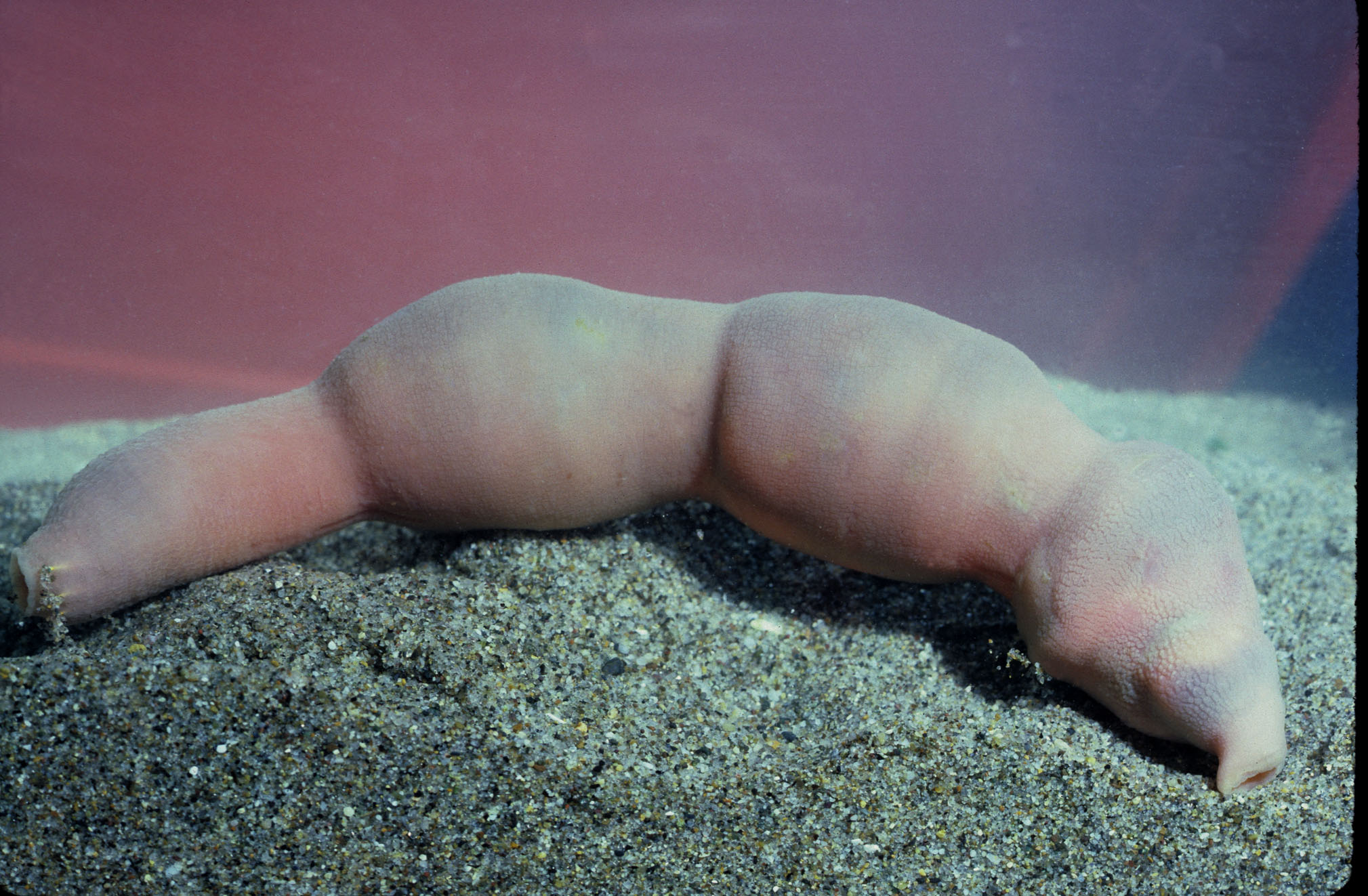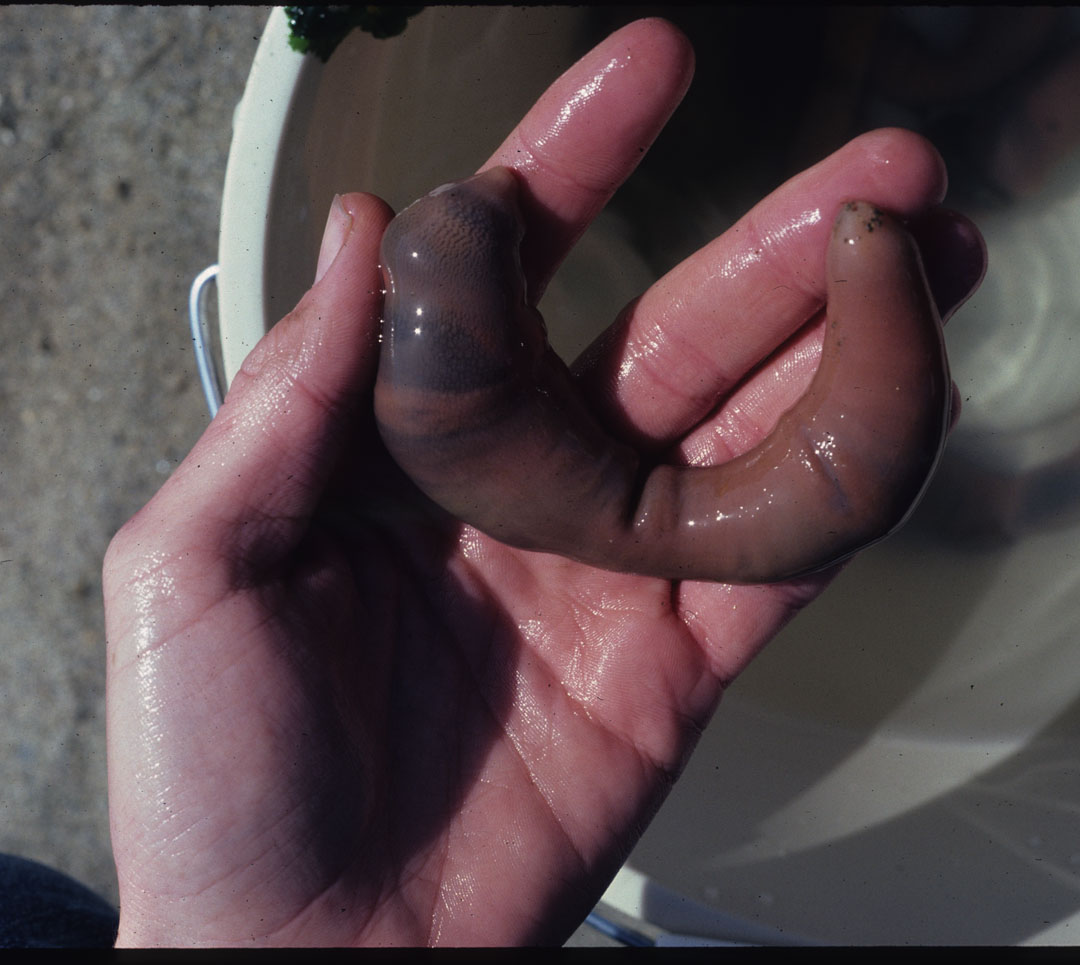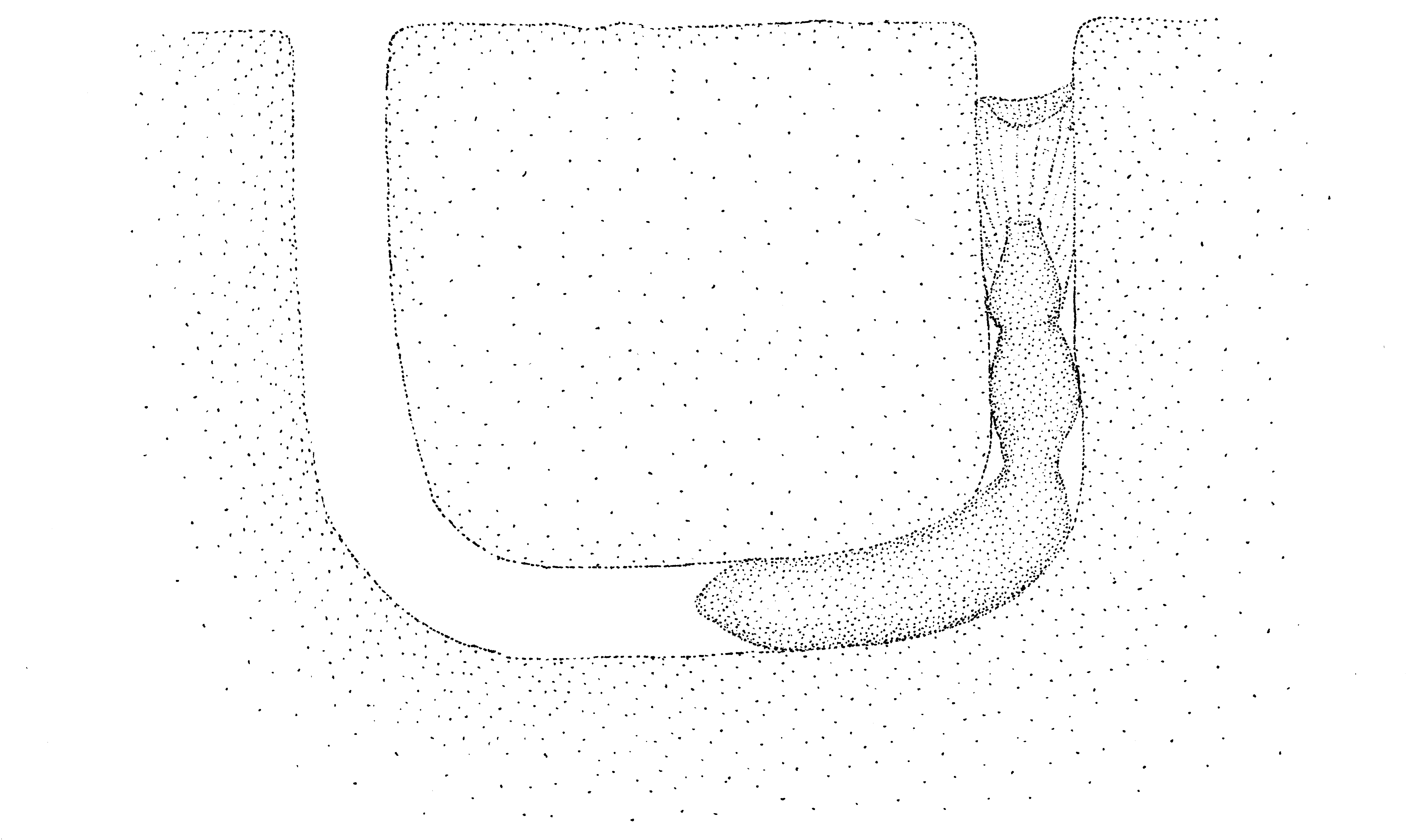Poor unfortunates
Evolution has been kind to some animals. Take the grace and the noble looks of the big cats or the fearsome symmetry of birds of prey. These are the lucky ones, but there are many creatures with an appearance that can only be described as unfortunate. Take the spoon worm, Urechis caupo, commonly known as the fat innkeeper. From any angle it looks like a big, disembodied member and as though it’s almost ashamed of its unfortunate appearance it spends most of its life in a U-shaped burrow in the wreaking ooze of mud-flats.
Just take a look at this picture:

Here’s another picture of said animal, this time in a hand to provide an idea of size (they can get much bigger than this):

Life for the fat innkeeper is a simple, monotonous affair of trying to find enough food to survive and grow. By rhythmic undulations of the worm’s body water is drawn through the burrow and is filtered with a cone-shaped mucus net secreted from the animal’s head. When the net is loaded with edible detritus the worm eats it and makes another one to begin the process again.

This worm is called the fat innkeeper because it’s fat and various animals take up residence in its burrow. Its lodgers include a small crab (Pinnixa sp.), a scale worm (Hesperonoe adventor) and a small clam (Cryptomya californica).
You’d be forgiven for thinking that the distasteful appearance and secretive nature of the fat innkeeper would mean it has few enemies. Unluckily, this worm represents a soft, nutritious meal for any predator that can remove it from its burrow and many creatures are known to eat this worm. Of particular interest is the leopard shark (Triakis semifasciata), which is known to suck fat innkeepers from their hideaway by pursing their mouth around the burrow entrance.
You can find out about other bizarre animals like the fat innkeeper in my book, Extraordinary Animals:
http://www.amazon.co.uk/Extraordinary-Animals-Encyclopedia-Curious-Unusual/dp/0313339228
Leave a Reply